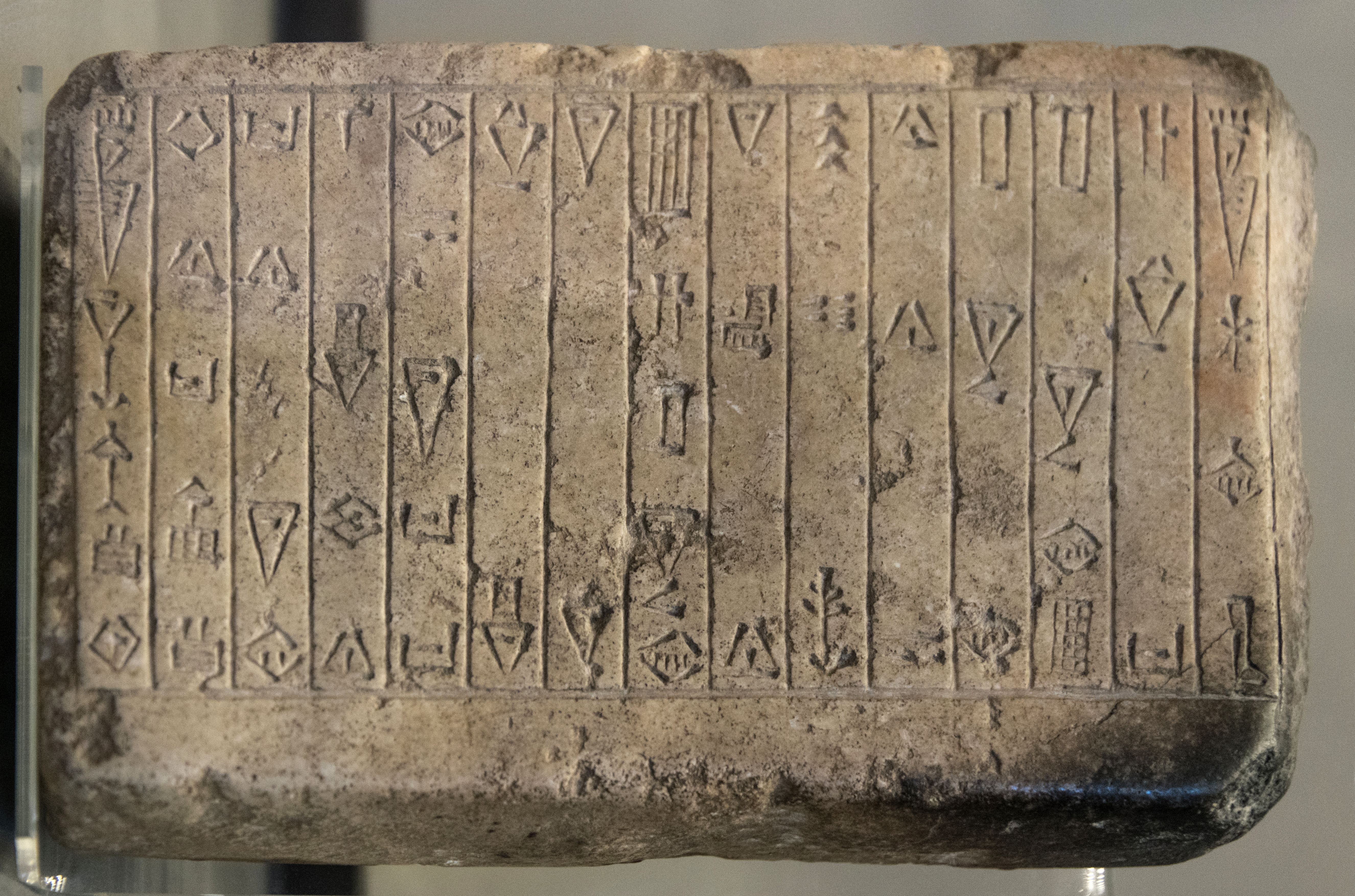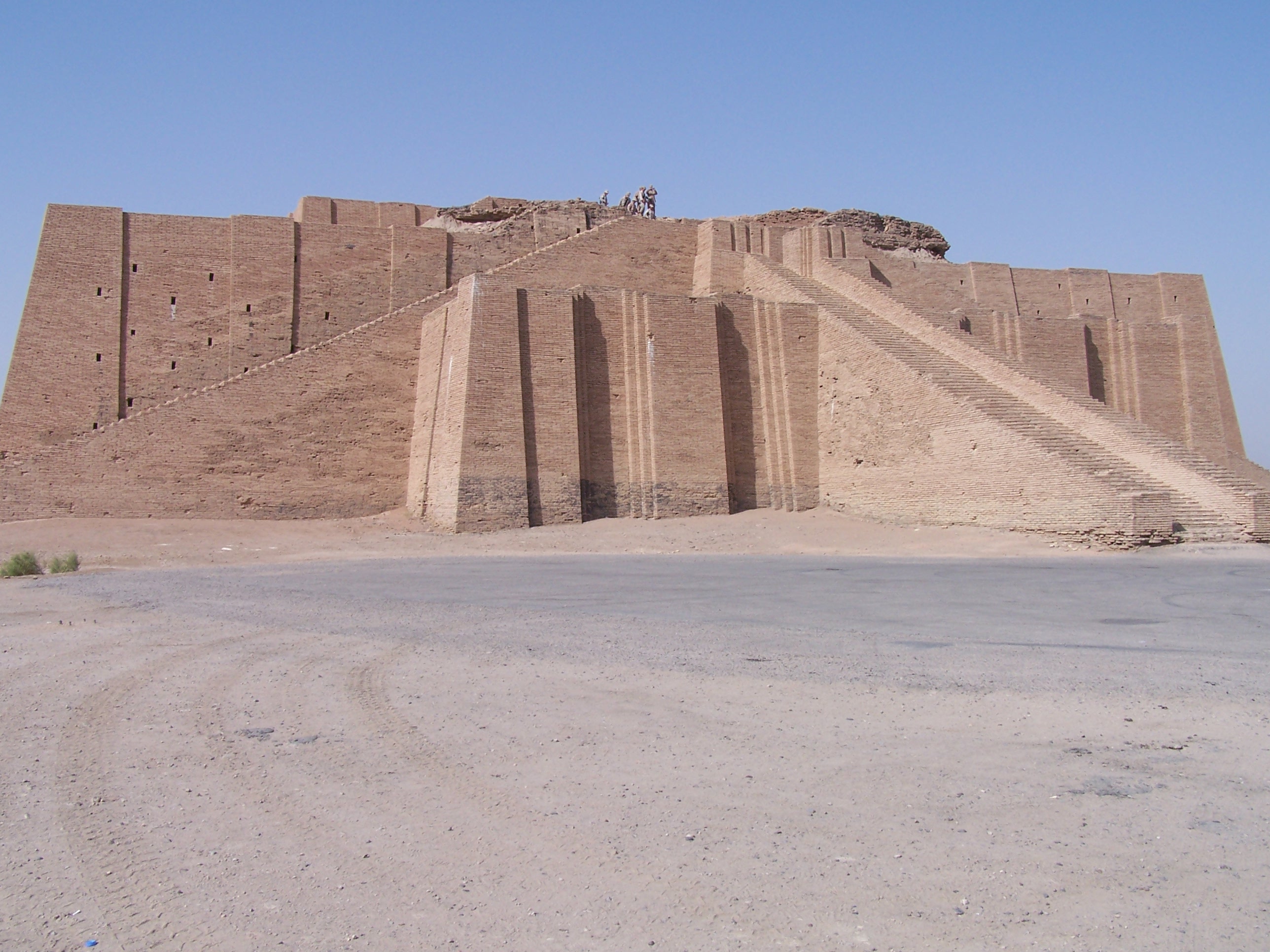|
Utu-hengal
Utu-hengal ( sux, , ), also written Utu-heg̃al, Utu-heĝal, and sometimes transcribed as Utu-hegal, Utu-hejal, Utu-Khengal, was one of the first native kings of Sumer after two hundred years of Akkadian and Gutian rule, and was at the origin of the foundation of the Third Dynasty of Ur by his son-in-law Ur-Nammu. He was officially "King of Uruk" in his inscriptions, and is therefore considered as the founder, and only member, of the "Fifth dynasty of Uruk" (Uruk V). Life and reign There are several theories regarding his background. The most common is that he was a governor of Uruk who revolted against the Gutian kings in c. 2050 BC. He led the cities of Sumer against the last Gutian king Tirigan. After a battle at an unknown location, Utu-Hengal was victorious and forced Tirigan to flee back towards Gutium. Tirigan fled to the city of Dubrum (location unknown) where the people treated him kindly. However, once the people of Dubrum heard that Utu-Hengal was marching towards ... [...More Info...] [...Related Items...] OR: [Wikipedia] [Google] [Baidu] |
Tirigan
Tirigan ('' fl.'' late 3rd millennium BCE, , ''ti-ri₂-ga-a-an'') was the 19th and last Gutian ruler in Sumer mentioned on the "''Sumerian King List''" (''SKL''). According to the ''SKL'': Tirigan was the successor of Si'um. Tirigan ruled for 40 days before being defeated by Utu-hengal of Uruk, ''c.'' 2050 BC. Faculty of Oriental Studies, University of Oxford Sumerian King List According to the ''Sumerian King List'':Victory stele of Utu-hengal Tirigan is mentioned extensively in the victory stele of his nemesis and successor, |
Gutian People
The Guti () or Quti, also known by the derived exonyms Gutians or Guteans, were a nomadic people of West Asia, around the Zagros Mountains (Modern Iran) during ancient times. Their homeland was known as Gutium (Sumerian: ,''Gu-tu-umki'' or ,''Gu-ti-umki''). Conflict between people from Gutium and the Akkadian Empire has been linked to the collapse of the empire, towards the end of the 3rd millennium BC. The Guti subsequently overran southern Mesopotamia and formed the Gutian dynasty of Sumer. The Sumerian king list suggests that the Guti ruled over Sumer for several generations following the fall of the Akkadian Empire. By the 1st millennium BC, usage of the name Gutium, by the peoples of lowland Mesopotamia, had expanded to include all of western Media, between the Zagros and the Tigris. Various tribes and places to the east and northeast were often referred to as ''Gutians'' or ''Gutium''. For example, Assyrian royal annals use the term Gutians in relation to populati ... [...More Info...] [...Related Items...] OR: [Wikipedia] [Google] [Baidu] |
Gutian Dynasty
The Gutian dynasty, also Kuti or Kutians ( Sumerian: , gu-ti-umKI) was a dynasty, originating among the Gutian people, that came to power in Mesopotamia ''c.'' 2199—2119 BC ( middle), or possibly ''c.'' 2135—2055 BC (short), after displacing the Akkadian Empire. It ruled for roughly one century; however, some copies of the ''Sumerian King List'' (''SKL'') vary between 4 and 25 years. The end of the Gutian dynasty is marked by the accession of Ur-Nammu (founder of the Third Dynasty of Ur, which ''fl.'' ''c.'' 2112 BC ( middle) or 2055 BC (short)). Originally thought to be a horde that swept in and brought down the Akkadian Empire, the Gutians are now known to have been in the area for at least a century by then. By the end of the Akkadian period, the Sumerian city of Adab was occupied by the Gutians, who made it their capital. History The Gutians were described as part of the horde that toppled the kingdom of Akkad (or Agade). It was a conglomeration of tribes that descended ... [...More Info...] [...Related Items...] OR: [Wikipedia] [Google] [Baidu] |
Third Dynasty Of Ur
The Third Dynasty of Ur, also called the Neo-Sumerian Empire, refers to a 22nd to 21st century BC (middle chronology) Sumerian ruling dynasty based in the city of Ur and a short-lived territorial-political state which some historians consider to have been a nascent empire. The Third Dynasty of Ur is commonly abbreviated as Ur III by historians studying the period. It is numbered in reference to previous dynasties, such as the First Dynasty of Ur (26-25th century BC), but it seems the once supposed Second Dynasty of Ur was never recorded. The Third Dynasty of Ur was the last Sumerian dynasty which came to preeminent power in Mesopotamia. It began after several centuries of control by Akkadian and Gutian kings. It controlled the cities of Isin, Larsa, and Eshnunna and extended as far north as Upper Mesopotamia. History The Third Dynasty of Ur arose some time after the fall of the Akkad Dynasty. The period between the last powerful king of the Akkad Dynasty, Shar-Kali-Sharri, a ... [...More Info...] [...Related Items...] OR: [Wikipedia] [Google] [Baidu] |
Ur-Nammu
Ur-Nammu (or Ur-Namma, Ur-Engur, Ur-Gur, Sumerian: , ruled c. 2112 BC – 2094 BC middle chronology, or possibly c. 2048–2030 BC short chronology) founded the Sumerian Third Dynasty of Ur, in southern Mesopotamia, following several centuries of Akkadian and Gutian rule. His main achievement was state-building, and Ur-Nammu is chiefly remembered today for his legal code, the Code of Ur-Nammu, the oldest known surviving example in the world. He held the titles of "King of Ur, and King of Sumer and Akkad". Reign According to the ''Sumerian King List'', Ur-Nammu reigned for 18 years.Thorkild Jacobsen, ''The Sumerian King List'' (Chicago: University of Chicago Press, 1939),pp. 122f Year-names are known for 17 of these years, but their order is uncertain. One year-name of his reign records the devastation of Gutium, while two years seem to commemorate his legal reforms ("Year in which Ur-Nammu the king put in order the ways (of the people in the country) from below to abo ... [...More Info...] [...Related Items...] OR: [Wikipedia] [Google] [Baidu] |
Nam-mahani
, title=Ruler of Lagash , image= , image_size=250 , caption= , spouse= , reign=c. 2100 BCE , father= , predecessor=Ur-gar , successor=Utu-hengal(Uruk V dynasty) , dynasty=Ruler of Lagash , succession= Nam-mahani ( sux, , ''nam-maḫ-ni'') was a Sumerian ruler, and the last '' ensi'' of Lagash circa 2100 BCE (middle chronology), roughly contemporaneous with the last king of Akkad, Shu-turul. His reign was followed by that of Utu-hengal, who destroyed the power of the Gutian Dynasty, and put and end to the power of the various city-states, reunifying the Sumerian realm. Inscriptions Nam-mahani is known from various inscriptions, and especially a macehead dedicated by queen Nininimgina and bearing the name of King Nam-Mahani, to god Kindazi: Other objects File:Votive mace head dedicated to god Kindazi by Ninkagina, c. 2100 BCE, from Tell Telloh, Iraq. British Museum.jpg, The votive macehead in the name of King Nam-Mahani and Queen Ninkagina of Lagash, dedicated to god Kindazi, ... [...More Info...] [...Related Items...] OR: [Wikipedia] [Google] [Baidu] |
Sumerian Rulers
The history of Mesopotamia extends from the Lower Paleolithic period until the establishment of the Caliphate in the late 7th century AD, after which the region came to be known as Iraq. This list covers dynasties and monarchs of Mesopotamia up until the fall of the Neo-Babylonian Empire in 539 BC, after which native Mesopotamian monarchs never again ruled the region. The earliest records of writing are known from the Uruk period (or "Protoliterate period") in the 4th millennium BC, with documentation of actual historical events, and the ancient history of the region, being known from the middle of the third millennium BC onwards, alongside cuneiform records written by early kings. This period, known as the Early Dynastic Period, is typically subdivided into three: 2900–2750 BC (ED I), 2750–2600 BC (ED II) and 2600–2350 BC (ED III), and was followed by Akkadian (~2350–2100 BC) and Neo-Sumerian (2112–2004 BC) periods, after which Mesopotamia was most often divided bet ... [...More Info...] [...Related Items...] OR: [Wikipedia] [Google] [Baidu] |
King Of The Four Corners
King of the Four Corners of the World (Sumerian: '' lugal-an-ub-da-limmu-ba'', Akkadian: ''šarru kibrat 'arbaim'', ''šar kibrāti arba'i'', or ''šar kibrāt erbetti''), alternatively translated as King of the Four Quarters of the World, King of the Heaven's Four Corners or King of the Four Corners of the Universe and often shortened to simply King of the Four Corners, was a title of great prestige claimed by powerful monarchs in ancient Mesopotamia. Though the term "four corners of the world" does refer to specific geographical places within and near Mesopotamia itself, these places were (at the time the title was first used) thought to represent locations near the actual edges of the world and as such, the title should be interpreted as something equivalent to "King of all the known world", a claim to universal rule over the entire world and everything within it. The title was first used by Naram-Sin of the Akkadian Empire in the 23rd century BC and was later used by the ... [...More Info...] [...Related Items...] OR: [Wikipedia] [Google] [Baidu] |


.jpg)


